Musk mallow, Bush carrot
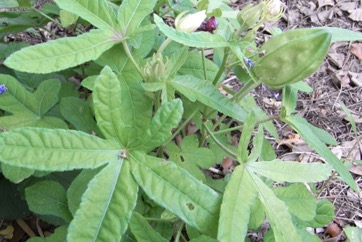
A tropical plant. It suits tropical climates but can grow in cooler places. It needs a rich well-drained soil in a sunny position. Tolerates a pH in the range 6 to 7.8. In China is grows on flat areas and beside streams in S China. It needs a temperature above 5°C. It suits hardiness zones 9-12. In Yunnan.
Also known as:
Adusa, Abelmosco, Algalia, Ambarina, Ambrette, Arnam hanserong, Balu-wah, Bana bhendi, Ban bheri, Bon bhendi, Bush carrot, Fai-phee, Fau tagaloa, Gandapura, Gorukhia-korai, Huang kui, Jangali-bhindi, Kapasan, Kasturi-bhenda, Kattukasthuri, Kattuvendai, Kon-kado, Latakasturikam, Muskdana, Nikono-koon, Okeoke, Rani, Sangul, Som-chaba, Taw-wah, Tsirandranjaza, Vakeke, Varttilai kasthuri, Wakiwaki, Yirani
Synonyms
- Abelmoschus betulifolia Wall.
- Abelmoschus chinensis Wall.
- Abelmoschus ciliaris Walp.
- Hibiscus abelmoschus L.
- Hibiscus chinensis Roxb.
- and others
Edible Portion
- Seeds, Leaves, Root, Pods, Spice, Vegetable, Fruit
Where does Musk mallow grow?
Found in: American Samoa, Asia, Australia, Bangladesh, Britain, Burkina Faso, Cambodia, Central Africa, Central America, Central America, China, Chuuk, Colombia, Congo DR, Cuba, Denmark, Dominican Republic, East Africa, Europe, Fiji, France, FSM, Germany, Grenada, Guatemala, Haiti, Hawaii, Himalayas, India, Indochina, Indonesia, Iran, Italy, Laos, Madagascar, Malaysia, Mexico, Myanmar, Nepal, Netherlands, North America, Northeastern India, Pacific, Pakistan, Panama, Philippines, Rotuma, Samoa, Sao Tome and Principe, SE Asia, Sierra Leone, South America, Spain, Taiwan, Thailand, Tonga, Trinidad, Turkey, United States, Vanuatu, Venezuela, Vietnam, West Africa, West Indies
Notes: There are about 15 Abelmoschus species. They are tropical and subtropical.
Status: Cultivated.
Growing Musk mallow, Bush carrot
Cultivation: Plants can be grown from seeds. The seed germinates best at a temperature around 24°C. Seed can be sown direct or transplanted. Cuttings can be used. Plants should be cut back to allow new shoots to develop.
Edible Uses: The root tuber is eaten roasted. The young leaves are eaten cooked. They are used in soups. The leaves are used to clarify sugar. The seeds are used for flavouring. The are used to flavour bread, stews, and liqueurs. They can be chewed to sweeten the breath. The unripe pods are cooked and eaten as a vegetable. The seeds are the source of an essential oil used to flavour baked goods, ice cream, soft drinks and sweets.
Nutrition Info
per 100g edible portion| Edible Part | Energy (kcal) | Protein (g) | Iron (mg) | Vitamin A (ug) | Vitamin c (mg) | Zinc (mg) | % Water |
|---|---|---|---|---|---|---|---|
| Seeds | - | 2.3 | - | - | - | - | 11.4 |
| Leaves | 54 | 4.1 | - | - | - | - | 82 |
| Roots | - | - | - | - | - | - | |
| Pods | - | - | - | - | - | - |
Musk mallow, Bush carrot Photos

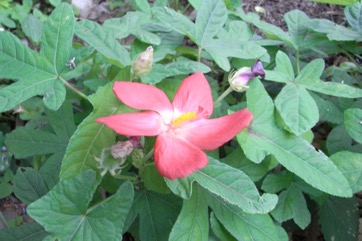
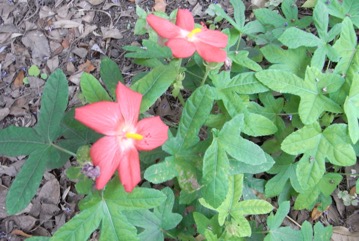
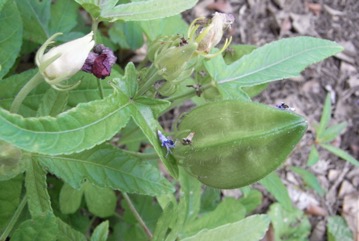
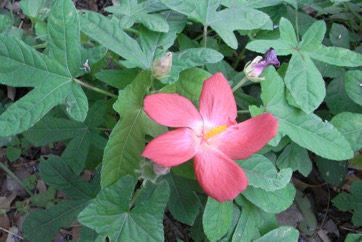
References
Altschul, S.V.R., 1973, Drugs and Foods from Little-known Plants. Notes in Harvard University Herbaria. Harvard Univ. Press. Massachusetts. no. 2765
Ambasta S.P. (Ed.), 2000, The Useful Plants of India. CSIR India. p 1
Arinathan, V., et al, 2007, Wild edibles used by Palliyars of the western Ghats, Tamil Nadu. Indian Journal of Traditional Knowledge. 6(1) pp 163-168
Arora, R. K., 2014, Diversity in Underutilized Plant Species - An Asia-Pacific Perspective. Bioversity International. p 47
Bandana, P. & Debabrata, P., 2015, Wild Edible Plant Diversity and its Ethno-medicinal use by Indigenous Tribes of Koraput, Odisha, India. Research Journal of Agriculture and Forestry Sciences. Vol. 3(9), 1-10, October (2015)
Bandyopadhyay, S. et al, 2009, Wild edible plants of Koch Bihar district, West Bengal. Natural Products Radiance 8(1) 64-72
BARC, 2016, State of Biodiversity for Food and Agriculture in Bangladesh. Bangladesh Agricultural Research Council.
Beasley, J., 2011, Plants of Tropical North Queensland - the compact guide. Footloose publications. p 77
Behera, K. K. et al, 2008, Wild Edible Plants of Mayurbhanj District, Orissa, India. J. Econ. Taxon. Bot. Vol. 32 (Suppl,) pp 305-314
Bremness, L., 1994, Herbs. Collins Eyewitness Handbooks. Harper Collins. p 228
Brown, D., 2002, The Royal Horticultural Society encyclopedia of Herbs and their uses. DK Books. p 96
Burkill, H. M., 1985, The useful plants of west tropical Africa, Vol. 4. Kew.
Burkill, I.H., 1966, A Dictionary of the Economic Products of the Malay Peninsula. Ministry of Agriculture and Cooperatives, Kuala Lumpur, Malaysia. Vol 1 (A-H) p 1182 (As Hibiscus abelmoschus)
Cabalion, P. and Morat, P., 1983, Introduction le vegetation, la flore et aux noms vernaculaires de l'ile de Pentcoste (Vanuatu), In: Journal d'agriculture traditionnelle et de botanique appliquee JATBA Vol. 30, 3-4
Cundall, P., (ed.), 2004, Gardening Australia: flora: the gardener's bible. ABC Books. p 67
Dangol, D. R. et al, 2017, Wild Edible Plants in Nepal. Proceedings of 2nd National Workshop on CUAOGR, 2017.
Ekka, N. S. & Ekka, A., 2016, Wild Edible plants Used by Tribals of North-east Chhattisgarh (Part-I), India. Research Journal of Recent Sciences. Vol. 5(ISC-2015), 127-131 (2016)
Facciola, S., 1998, Cornucopia 2: a Source Book of Edible Plants. Kampong Publications, p 146
Food Composition Tables for use in Africa FAO http://www.fao.org/infoods/directory No. 706
Grivetti, L. E., 1980, Agricultural development: present and potential role of edible wild plants. Part 2: Sub-Saharan Africa, Report to the Department of State Agency for International Development. p 29 (As Hibiscus abelmoschus)
Joshi, N., et al, 2007, Traditional neglected vegetables of Nepal: Their sustainable utilization for meeting human needs. Tropentag 2007. Conference on International Agricultural Research for Development.
Kar, A., & Borthakur, S. K., 2008, Wild vegetables of Karbi - Anglong district, Assam, Natural Product Radiance, Vol. 7(5), pp 448-460
Latham, P. & Mbuta, A. K., 2017, Plants of Kongo Central Province, Democratic Republic of Congo. 3rd ed p 10
Lim, T. K., 2015, Edible Medicinal and Non Medicinal Plants. Volume 9, Modified Stems, Roots, Bulbs. Springer p 2
Manandhar, N.P., 2002, Plants and People of Nepal. Timber Press. Portland, Oregon. p 64
Martin, F.W. & Ruberte, R.M., 1979, Edible Leaves of the Tropics. Antillian College Press, Mayaguez, Puerto Rico. p 203 (As Hibiscus abelmoschus)
McMakin, P.D., 2000, Flowering Plants of Thailand. A Field Guide. White Lotus. p 26
Miguel, E., et al, 1989, A checklist of the cultivated plants of Cuba. Kulturpflanze 37. 1989, 211-357
Paczkowska, G. & Chapman, A.R., 2000, The Western Australian Flora. A Descriptive Catalogue. Western Australian Herbarium. p 286
Parham, H. B. R, 1940, Supplement to the Journal of the Polynesian Society No. 16. Fiji Plants: Their Name and Uses.
Plants for a Future database, The Field, Penpol, Lostwithiel, Cornwall, PL22 0NG, UK. http://www.scs.leeds.ac.uk/pfaf/
Plants of Haiti Smithsonian Institute http://botany.si.edu/antilles/West Indies
Price, S.H. & J.L., Wild Food, Medicine and useful plants of the Wet tropics. Kwik Kopy, Cairns. p 1
PROSEA handbook Volume 13 Spices. p 273
Rajkalkshmi, P. et al, 2001, Total carotenoid and beta-carotene contents of forest green leafy vegetables consumed by tribals of south India. Plant Foods for Human Nutrition 56:225-238 (As Hibiscus abelmoschus)
Smith, A.C., 1981, Flora Vitiensis Nova, Lawaii, Kuai, Hawaii, Volume 2 p 423
Staples, G.W. and Herbst, D.R., 2005, A tropical Garden Flora. Bishop Museum Press, Honolulu, Hawaii. p 384
Sukarya, D. G., (Ed.) 2013, 3,500 Plant Species of the Botanic Gardens of Indonesia. LIPI p 574
Swaminathan, M.S., and Kochnar, S.L., 2007, An Atlas of Major Flowering Trees in India. Macmillan. p 42
Tanaka.
Tang ya, Malvaceae. Flora of China. p
Teron, R. & Borthakur, S. K., 2016, Edible Medicines: An Exploration of Medicinal Plants in Dietary Practices of Karbi Tribal Population of Assam, Northeast India. In Mondal, N. & Sen, J.(Ed.) Nutrition and Health among tribal populations of India. p 152
Terra, G.J.A., 1973, Tropical Vegetables. Communication 54e Royal Tropical Institute, Amsterdam, p 50 (As Hibiscus abelmoschus)
Tiwi Plants and Animals. 2001, Aboriginal flora and fauna knowledge from Bathurst and Melville Islands, northern Australia. Northern Territory Botanical Bulletin; No. 24 p 8
Wijayakusuma, H.M.H., et al, 1996, Tanaman Berkhasiat Obat Di Indonesia. Pustaka Kartini. p 79
World Checklist of Useful Plant Species 2020. Royal Botanic Gardens, Kew
Xu, Z., Tao, G. & Tan, J., 1988, Tropical Wild Flowers and Plants in Xishuangbanna, Agricultural Publishing House. photo 96
Yuncker, T.G., 1959, Plants of Tonga, Bernice P. Bishop Museum, Hawaii, Bulletin 220. p 183 (As Hibiscus abelmoschus)